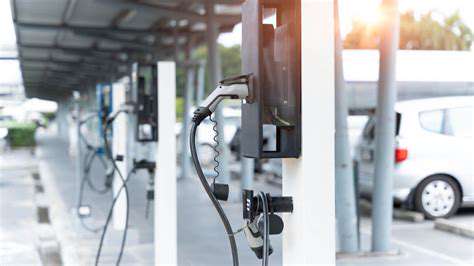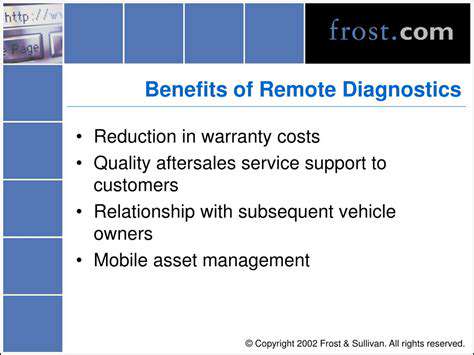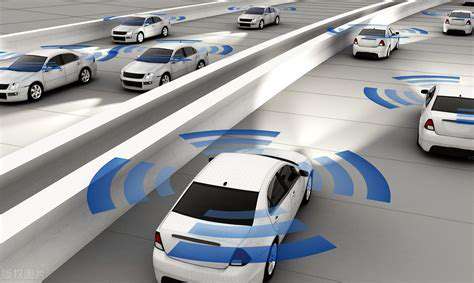
Battery Management
Keeping your electric vehicle's battery in top condition requires attention to detail and proper care. Unlike traditional cars, EVs demand specific charging practices to ensure longevity. Never leave your battery fully charged for extended periods, as this can stress the cells unnecessarily. Most manufacturers recommend maintaining charge levels between 20% and 80% for daily use. The vehicle's built-in diagnostics provide valuable insights into battery health – make it a habit to check these readings monthly.
Modern battery management systems do more than just regulate charging. They actively balance individual cell voltages and monitor temperature fluctuations to prevent damage. Some models even allow you to schedule charging during off-peak hours when electricity rates are lower. This smart feature not only saves money but also reduces strain on local power grids during peak demand periods.
Charging Station Safety
Public charging points present unique safety considerations every EV owner should understand. Before connecting, take a moment to visually inspect the equipment. Look for signs of damage to the charging unit itself and examine the cable thoroughly. Frayed wires or cracked connectors should never be ignored – report them to station operators immediately. Different networks may have specific connection sequences or authentication methods, so always follow on-screen instructions carefully.
When charging in unfamiliar locations, situational awareness matters. Park where you can maintain visual contact with your vehicle whenever possible. If you notice the charger making unusual sounds or the cable becoming excessively warm during use, disconnect immediately and notify the provider. Many stations now include emergency stop buttons – familiarize yourself with their location before beginning your charge.
Regular Vehicle Inspections
Tire maintenance takes on added importance with electric vehicles due to their instant torque delivery. Underinflated tires can reduce range by up to 10% while increasing wear patterns. Make it a weekly habit to check pressures when the tires are cold, adjusting according to load conditions. Don't forget to rotate them every 6,000-8,000 miles to ensure even wear across all positions.
Though EVs have fewer moving parts than combustion engines, fluid checks remain essential. Brake fluid should be replaced every two years regardless of mileage, while coolant systems require periodic inspection. Listen for new or changing sounds during operation – unusual whines or clicks could indicate developing issues. Keep the underbody clean, especially in winter regions where road salt accelerates corrosion.
Software Updates and Maintenance
Your EV's digital systems require as much attention as its physical components. Manufacturers frequently release updates that can improve range, charging speed, and even battery longevity. Set aside time monthly to check for available updates through your vehicle's infotainment system. Some critical updates may address safety-related software bugs you wouldn't want to miss.
The convenience of over-the-air updates shouldn't lead to complacency. Always review update details before installation, as some may require the vehicle to remain stationary for extended periods. For major system updates, consider scheduling them overnight when you won't need to use the car. Keep a written log of update dates and version numbers – this record proves invaluable if you ever need warranty service.
Battery Health and Charging Management: Key EV Considerations
Battery Degradation: Understanding the Process
All lithium-ion batteries experience gradual capacity loss over time, but the rate varies dramatically based on usage patterns. Heat represents the single greatest accelerator of battery degradation – parking in shade during hot weather makes a measurable difference. The chemical reactions inside battery cells naturally slow down over thousands of charge cycles, but proper care can significantly extend their useful life.
Charging Protocols and Their Impact
Frequent use of DC fast charging stations creates more heat and stress than slower AC charging. Reserve rapid charging for long trips when necessary, using Level 2 charging for daily needs. Many EVs allow you to set maximum charge rates – consider dialing this back when time permits. The battery management system will automatically adjust charging speeds as the battery nears full to prevent overcharging.
Temperature Management: A Critical Factor
Extreme cold temporarily reduces battery performance, while sustained heat causes permanent damage. Preconditioning your battery while still plugged in makes a noticeable difference in winter range. In summer, try to park in shaded areas or garages to keep battery temperatures moderate. Some vehicles offer battery cooling systems – ensure these have adequate airflow and receive regular maintenance checks.
State-of-Charge (SoC) Management
Batteries experience less stress when kept between 30% and 70% charge for daily storage. For extended parking periods (over two weeks), aim for approximately 50% charge to minimize degradation. If your EV has a storage mode or long-term parking setting, activate it before leaving the vehicle unused. These features automatically maintain optimal charge levels without requiring manual intervention.
Importance of Regular Maintenance
Scheduled service visits allow technicians to check battery cooling systems, electrical connections, and mounting hardware. Even minor alignment issues in battery packs can lead to uneven cell wear over time. Keep battery vents clear of debris and inspect the high-voltage warning labels annually for legibility. These simple steps help maintain both performance and resale value.
Battery Monitoring and Diagnostics
Advanced diagnostic tools available at dealerships can detect individual cell weaknesses before they affect performance. Ask for a detailed battery health report during annual checkups to track degradation rates. Many EVs display estimated battery capacity in their menus – document these readings periodically to establish your vehicle's unique aging pattern. Sudden drops in estimated range often indicate a need for professional evaluation.
The Role of Driving Habits
Smooth acceleration and anticipatory braking reduce battery strain significantly. Using regenerative braking effectively can recapture up to 30% of the energy normally lost during deceleration. Avoid sustained high-speed driving when possible, as aerodynamic drag increases exponentially with speed. Planning routes with fewer steep inclines and maintaining steady speeds helps maximize every kilowatt-hour of charge.











